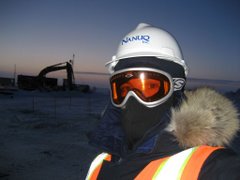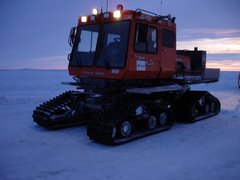So, last week I went to a local festival called “Gion Matsuri”. I’ve received a few different explanations as to the reason for this celebration which is quite understandable as it’s thought to be over a thousand years old. In general Matsuri Festivals have agrarian roots dating back to the Yayoi period (300 B.C.) Explanations include hope for a good rice harvest, the end of the rainy season and hence the end of the mosquito/cholera season (this used to be quite a problem so it’s likely that they were celebrating having lived through it another year), and just because it’s summer. Basically, local community groups sponsor the construction of different wooden carts that are built and put on display over a week long period. At the end of the week these massive 2 to 3 story carts are hauled hand and foot (via the folks that built it) through down town Kyoto in a Parade. Some of the carts are simply frames with large hanging lanterns while others are very elaborate and hold a group of musicians on the top that play the special gion festival music (basically bells and drums with some chanting); see the photo below.
This past weekend I hooked up with some of my “old” NHMJ buddies (these are engineers from the first part of my trip) to travel to Hiroshima and Fukuoka. Hiroshima is of course the site of the first use of an Atomic Bomb (in an actual attack rather than a test) during World War II. Regardless of weather or not one agrees with the use of the first atomic weapons, the impact ofvisiting the International Peace Park and ruins located at ground zero is a bit beyond description; aside from that I don’t feel it appropriate to use this website to force my opinions on anyone. Even if I did express an opinion, given the magnitude and significance of the history of this city and as is typically the case, some one has almost assuredly said it better and more wisely. I’ll simply quote the plaque located at the A-bomb dome:
“The A-bomb dome is the ruins of the former Hiroshima Prefecture Industrial Promotion Hall which was destroyed by the first atomic bomb ever to be used in the history of humankind on August 6, 1945. The atomic bomb was detonated in the air at an altitude of 600 meters almost right over the hall. The explosion by a single bomb claimed the lives of over 200,000 people and the city area of about 2-km radius was turned into ashes. In order to have this tragic fact known to succeeding generations and to make it a lesson for humankind, the reinforcement work of the ruins has been done by the contributions of many people who desire peace within and out of the country. The ruins shall be preserved forever.
August 6, 1967 Hiroshima City”
One of the great things about being human is our ability to heal both physically and emotionally. A good portion of the Peace Park and Memorial Museum are dedicated to chronicling the effects of the bomb and the remembrances of the people that did and did not survive. However an equal portion is dedicated towards a sense of hope that history will not repeat itself and that atomic weaponry soon becomes a thing of the past. The photo of the paper cranes is at a children’s memorial dedicated to children killed during andafter the blast. The memorial in particular is meant to reflect the story of a little girl who died of leukemia a few years after the attack. During her sickness she began to fold paper origami cranes in keeping with an old Buddhist custom of granting a wish for folding 1001 of them. When she eventually passed away the story of the cranes had spread and became a symbol for all the children lost in the attack. Today visitors to the memorial either purchase or make strings of cranes and place them there. The photo of the dragon is on the side of a massive drum donated to and located at the museum; I just thought it looked really cool.
Our next jaunt was to Miyajima Island in the Inland Sea of Japan across from Hiroshima. We took a cable car to almost the top of Mt. Misen and then hiked through a dense forest to the top and back to the main town. The photo is of me at the O-torii (big gate) to the main temple on the island (Itsukushima-jinja). According to legend the gate was constructed over the water as the island was considered so holy that only select monks were aloud to set foot on it. In fact the walkways of the temple are still pile supported and over water not land; this was also taken to the extreme that no one was to be born or die on the island i.e. no elderly or pregnant folks aloud. However, these days the tourist dollar prevails and you can “walk all over” the island.
There isn’t much to report on Fukuoka other than that I wasn’t swept away in the flood that hit the city the day we arrived. We had a great time tooling around town but were pretty much drenched the whole time; I can just imagine what my shoes will smell like if/when they dry out. We also stayed in a traditional Japanese style hotel (Ryokan) because they’re fun and typicallycheaper than anything else; we had the distinct pleasure of sharing our environs with about forty 10 year olds from a visiting little league team (they sure did run around a lot, very late, and very early).
That’s all for now; hope everyone is well; miss you all very much.
Matt

Gion Matsuri, Kyoto, Japan, July 2003

O-torii at Itsukushima-ji, Miyajima, Japan, July 2003

River Hike down Mt. Misen, Miyajima, Japan, July 2003

A-bomb Dome, Hiroshima, Japan, July 2003

Side of Peace Drum, Hiroshima, Japan, July 2003

Children's Peace Memorial, Hiroshima, Japan, July 2003



No comments:
Post a Comment